Learning Management Systems (LMS) provide organizations access to a centralized platform for facilitating in-person, hybrid, or remote employee training. As a business owner looking to train or upskill your teams, an LMS helps you reduce the time spent on manual administrative time like attendance taking, grading assessments, tracking progress, and analyzing learner retention.
These platforms let you structure engaging training sessions for your teams using features like microlearning, gamification, and virtual classrooms that improve focus, increase learner engagement by up to 72%, and support long-term retention.
If you’re looking for the best learning management system for your business but don’t know what features to look out for or how these platforms work, keep reading. In this article, you’ll learn what an LMS is, the areas you can use an LMS in your enterprise, and the best learning management systems you can choose from.
What is a Learning Management System (LMS)?
So what is a learning management system? A learning management system (LMS) is a software application that hosts and delivers educational materials.In some contexts an LMS may be referred to as a learning experience platform (LXP). Learning management systems are useful for a number of purposes, including onboarding and analysis.
LMSs usually consist of two parts: an admin interface and a user interface. Managers use the admin interface to organize and set up their learning materials. The user interface is what users see and interact with. An LMS allows you to build online learning materials and share them with employees and partners in a quick, efficient way. You can also monitor their progress and see how they’re performing in different areas, much like a teacher tracks the progress of her students.
Businesses of all types and sizes use LMSs, as they are exceptionally helpful in delivering e-learning content to broad audiences, whether they’re working remotely or onsite. An LMS system may be used to sell courses, train employees, and everything in between. A platform like this can help you deliver quality educational content, regardless of your industry. These are just some of the reasons that LMSs have become so widely-used.
Of course, one of the best uses for a learning management platform is employee training and onboarding. LMSs are especially helpful to businesses with remote and hybrid employees. LMSs allow employees to learn from home— and complete courses and training on their own time, in their own way.
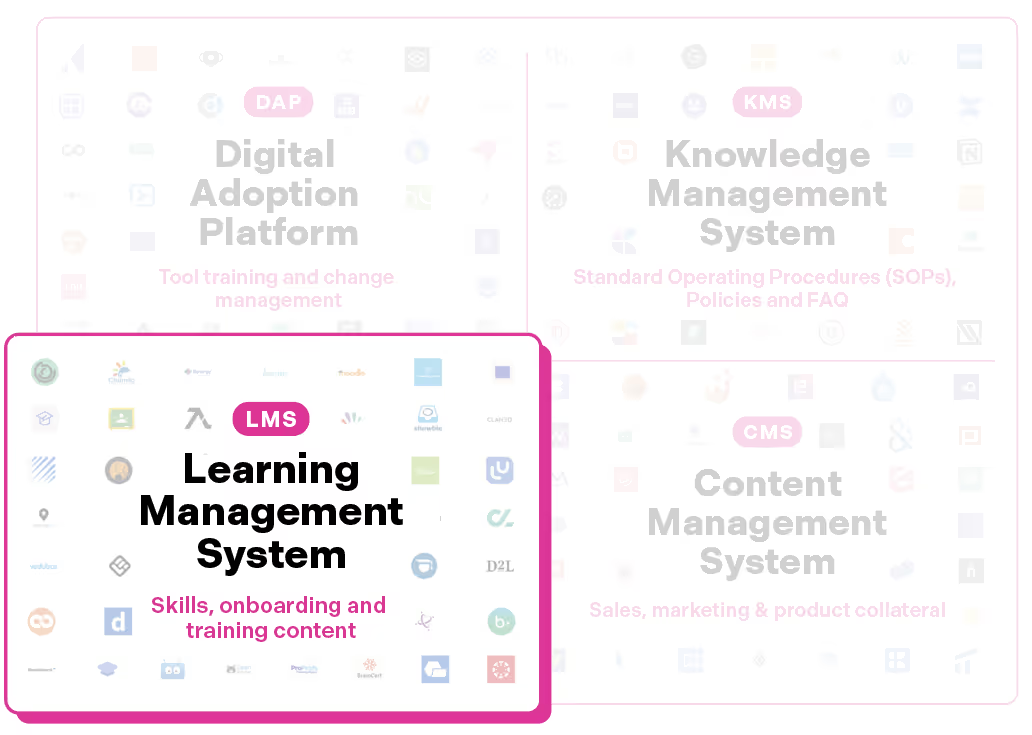
How Do Businesses Use LMS and What Are Their Benefits?
LMSs have multiple use cases. They are used by businesses of all sizes, as well as government agencies and educational institutions. Here are some of the most common ways that businesses today use LMS platforms.
Employee Onboarding
One of the most common uses of LMS platforms is employee onboarding. This can be especially useful for remote employees, as they’re often unable to come into the office for traditional onboarding activities. With an LMS, employee onboarding can be made much more flexible, allowing for employees to complete tasks on a timeframe that’s better aligned to their schedules.
Rather than having to come into the office at a certain time for a given period of time, they can simply log into the LMS platform and get things done at their own pace. This can be a great way for them to get to know more about the company and access materials as they need them.
Certifications and Ongoing Training
Beyond onboarding, an LMS streamlines and automates ongoing employee training, allowing individuals to take control of their own development. Features like gamification and interactive content can be used to make continuous learning more engaging.
Sales Enablement
In addition to employee onboarding and training, LMSs can be used with sales enablement to assist with sales onboarding and equip sales teams with the knowledge and resources they need to hit their targets. A
Training is an important aspect of sales because it helps teams improve client interactions and close more deals. Sales training through an LMS, gives salespeople a roadmap to success and gives them the freedom and flexibility to complete tasks in a way that’s better suited to their work and life responsibilities. As a result, LMS can help both remote and in-office workers complete their training and level up their skills in a more flexible time frame.
Employee Development and Retention
While onboarding and training are crucial to setting employees up for success, it’s equally as important to ensure their continued development. Employee retention is an important, but often overlooked use case for LMS platforms. Onboarding new employees is only half the battle — you also need to work at keeping them engaged. LMS activities can help them stay involved and promote their development. Consider using your LMS for employee retention and additional training to nurture their growth and the value they bring to your business.
Critical Downsides of Traditional LMS platforms
While traditional LMS platforms offer clear benefits, their limitations often become major roadblocks in today’s fast-paced business environment. From an administrative burden to rep resistance, these issues actively work against how our brains naturally learn and retain information.
The Burden of Course Creation
In today's "Change Economy," the administrative burden of creating and maintaining course content is a battle you can't win. While designing a single hour of learning content can take a team anywhere from seven to fifty hours of work, that investment is often wasted. By the time a course is ready for launch, a new product update or a shift in the competitive landscape can render it obsolete. This isn't just a content manager's nightmare; it's a strategic risk that leaves your sales teams equipped with yesterday’s information in a market that demands a forward-looking perspective.
The “Check-the-Box” Mentality and The Forgetting Curve
Beyond the creation burden, a more critical issue plagues traditional learning: ineffective knowledge retention. Our brains are simply not wired to retain information from one-time events without reinforcement. This "check-the-box" mentality—where completion is prioritized over comprehension and application—is a common pitfall that actively works against how our memories function.
You know the drill: a new product launches, a course is assigned, and reps are expected to internalize a mountain of information in a single sitting. The training may be completed, but without continuous reinforcement and real-world application, the knowledge quickly evaporates from their memory. This is the reality of the forgetting curve in action.
Tracking course completion creates a misleading metric and a false sense of security. It gives the illusion of an enabled team without guaranteeing on-the-job application. That's why the industry is moving from one-time onboarding to a continuous "Everboarding" model. Instead of a three-week information blitz, learning becomes an ongoing journey, reinforced over time, ensuring knowledge sticks and translates to real-world performance.
Lack of Personalization
Most traditional LMS platforms fall into the trap of a one-size-fits-all approach. While this is tolerable for a single, required course on HR or cybersecurity, it's a major obstacle for an entire onboarding program. A new hire with limited industry knowledge has vastly different learning needs than a seasoned veteran, yet traditional LMS platforms often deliver a standardized experience regardless of individual needs or experience levels.
Rep Resistance
Reps are often reluctant to engage with top-down learning initiatives. They are in the business of winning, not sitting through courses. The idea of mandating courses or recorded role-plays feels counterproductive. True learning comes from real-world repetition, coupled with ongoing coaching and feedback. This is why many organizations are seeing low completion rates — reps are simply not motivated to engage with a learning style that feels disconnected from their daily work.
Top factors to prioritize when evaluating an LMS platform
1. Ease of Content Creation & Freshness
The need for an easy admin and speed of content creation is directly tied to the demands of the Change Economy. In a world where market dynamics, technology, customer needs, competitors and your own products and services evolve at a relentless pace, the value of information decays rapidly. The traditional approach of slow, centralized content creation — where courses take weeks to produce — is a liability. It creates a gap where reps are left without the most current and relevant knowledge, leading to missed opportunities and a loss of competitive advantage. Learning agility - the ability to quickly create, update, and deploy fresh, accurate training is no longer a luxury; it's a necessity to ensure reps can adapt and sell effectively in real-time.This is why microlearning is so critical.
Ease of content creation also empowers a culture of learning. The most effective solutions are agile and decentralized. Optimize for a platform that makes content creation effortless and fast —n ot just for enablement, but for your sales managers and subject matter experts. Look for tools that champion microlearning, making bite-sized content easy to manage and update. By empowering a wider group to create, you ensure your knowledge is constantly fresh and reflects real-time insights from the field. This transforms your organization into a dynamic learning culture, always ahead of the curve.
Look for a platform with AI-powered governance that helps you proactively identify outdated information, simplifies updates, and automates content audits. This ensures reps are always using a trustworthy and up-to-date training library.
2. Focus on Microlearning for Speed, Scalability and Agility
This is precisely why microlearning is so critical. By championing bite-sized, digestible content, admins can quickly create and update training resources in a fraction of the time. This agility ensures reps always have access to fresh, accurate information, which is no longer a luxury but a necessity for adapting and selling effectively in real-time.
Think of the benefits of a more modular approach similar to that of Spotify or Apple Music playlist, where songs are individual, self-contained units that can be arranged and rearranged in any order. In our world, these individual songs are modular microlearnings — bite-sized pieces of knowledge, training, or content.
A modular approach is critical for a few reasons:
- Agility in a Change Economy: Instead of a single, monolithic training course that takes weeks to create and becomes obsolete overnight, you create small, modular trainings. When a product or process changes, you only need to update that one small module, not the entire course. This makes content creation and maintenance incredibly fast and agile.
- Seamless Repurposing: A single microlearning resource (e.g., a "competitor battle card" or a "product feature overview") can be used in multiple learning playlists for different use cases. The same piece of content can be part of a new hire's onboarding playlist, a product launch training playlist, and a specialized playlist for an upcoming deal. This eliminates the massive duplication of effort that plagues traditional content management.
- Personalized Learning Journeys: With modular content, you can easily curate and customize playlists tailored to a specific rep's role, experience, or knowledge gap. This moves beyond the "one-size-fits-all" model of learning, ensuring every rep gets the exact information they need to succeed.
3. Rep Adoption: The Personalization,Search & UX Imperative
Ultimately, the best platform is the one reps love to use. Look beyond feature lists and prioritize a flawless user experience and powerful searchability that feels personalized. to each rep. Your reps need to be able to find and revisit content with zero friction. The platform should feel like an intuitive extension of their work, not a separate destination. By embedding learning and contextual guidance directly in the rep’s workflow, you ensure consistent reinforcement, making knowledge stick and turning a positive user experience into a sustained, high-performing habit.
4. Measure Performance Impact, Not Just Completion Rates:
Traditional LMS platforms tell you if a rep completed a course or passed a test, but they can't tell you if that learning had any real-world impact. The future of enablement lies in connecting learning activity directly to sales outcomes. Optimize for a platform that provides tangible analytics—showing you which content is viewed, when, and how that behavior correlates with higher win rates, faster ramp times, and increased revenue.
5. Focus on Reinforcement for Retention:
Learning is not a one-time event; knowledge retention is the real goal. Traditional LMS platforms deliver training once, leaving reps vulnerable to the "forgetting curve." The most effective platforms are designed for continuous reinforcement, providing just-in-time nudges and contextual guidance to ensure learning sticks where it matters most—in the rep's daily workflow.
Best Modern Learning Management Systems
Now that you know how you can leverage LMS solutions, let's look at the best LMS platforms and their key features:
1. Spekit - a modern learning platform with an emphasis on just-in-time learning and enablement

Spekit combines a unified GTM content management hub with a just-in-time learning assistant to deliver answers, guidance, and the right assets directly inside tools like Salesforce, email, Gong, LinkedIn, and more. You centralize and sync content from existing repositories like Google Drive and Sharepoint, govern it, and measure impact, while reps get contextual recommendations without leaving their workflow.
Spekit also lets you centralize training and learning materials and organize learning paths based on a specific team, process, or topic. With Spekit’s in-app learning and AI-powered content creation features, organizations can deliver coaching or training to teams without disrupting their workflow. Employees can go from novices to masters in no time with just-in-time knowledge instantly accessible at their fingertips.
Key capabilities
- Powerful content management hub with real-time sync and AI-powered governance: Sync from Drive, SharePoint, and Confluence; versioning, governance dashboards, and Revenue Insights to keep content accurate and prove impact.
- Embedded guidance and change comms: Bite-sized in-app answers and process guidance plus in-app Spotlights (real-time alerts) to communicate launches and process updates where work happens.
- AI Sidekick Assistant with recommendations: Contextual content suggestions, instant answers, and help drafting messaging next to any email, call, or opportunity.
- Deal Rooms and trackable links: Share curated buyer content in a single link, get real-time notifications, and tie engagement to revenue.
- Knowledge Checks and playlists: Assess understanding and build modular training playlists for onboarding and everboarding.
- Low-lift rollout and delivery: Works across tools without heavy integrations; customers commonly roll out quickly.
Outcomes teams report
- Launch in hours: Teams have connected Spekit from kickoff to tech integration in 24 hours.
- 30% faster average implementation time vs competing enablement solutions, per G2.
- Rapid adoption: 84% of reps actively using Spekit as their go-to for answers within the first 30 days.
- Measurable savings: one customer logged 6K content views and 3K searches in a month, saving more than $40K.
Best for
Revenue teams that need fresh, governed content delivered in the moment of need, with visibility into what gets used, when, and how it influences pipeline.
2. iSpring

iSpring is an eLearning authoring tool designed to enable organizations to onboard, upskill, and certify their teams. It is a SCORM-compliant platform that helps users create interactive courses and check how teams engage with the courses through smart training management. iSpring integrates with HR suites, CRMs, and eCommerce solutions.

Key Features
- Translate courses on user portals to different languages
- Gamified learning paths
- Mobile app with online and offline access to courses
- AI-powered online course builder
- E-learning authoring toolkit built into Powerpoint
3. Absorb LMS

Absorb is an AI-powered LMS designed for profitable training. It enables users to create and monetize courses externally while also training internal employees. The platform supports instructor-led courses, blended learning, and online training for different use cases, including compliance, customer, and partner training.
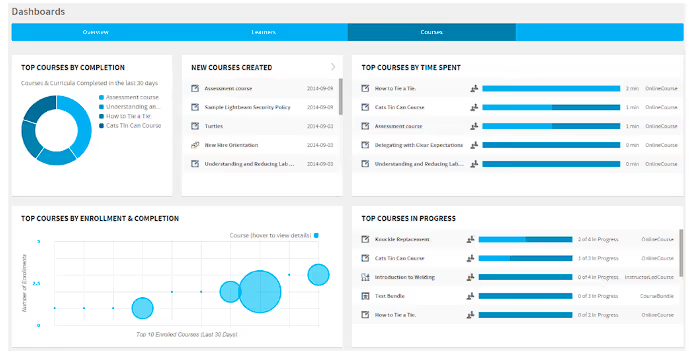
Key Features
- Integrated eCommerce shopping cart for selling courses
- Drag and drop tool to create online SCORM courses
- Built-in generative AI for content creation
- GDPR, SOC 2.0, and WCAG 2.0 compliance
- Learning experience tools for managing user course journey
4. TalentLMS

TalentLMS enables organizations to build and organize a customized training platform for employees. Users can integrate their own HTML, CSS, and Javascript to finetune the platform and also create a training homepage that’s user-specific. TalentLMS lets organizations maintain sub-accounts to segregate training based on teams, departments, and roles.
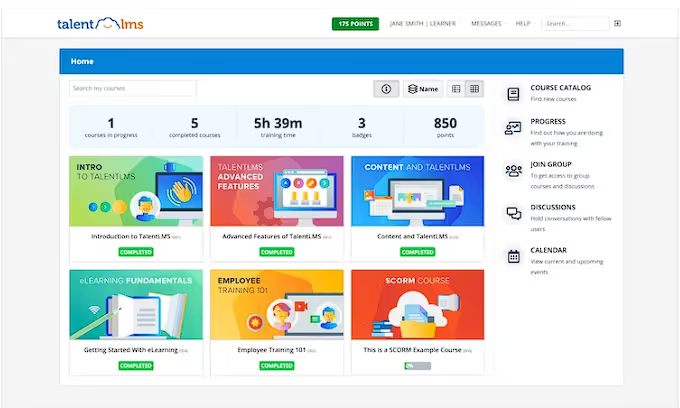
Key Features
- AI-powered course creation, editing, and personalization
- Survey engine builder for sending surveys and analyzing responses
- Auto-assign courses to learners
- Upload, store, organize, and share content in a file repository
- Automate admin tasks like emailing or deactivating inactive users
5. Docebo

Docebo LMS enables organizations across industries like tech, manufacturing, and financial services to create a learning ecosystem for their employees. It utilizes generative AI to help organizations produce training content, automate workflows, and monitor learner progress. Docebo lets users integrate with their existing tech stack, such as Google Drive, Asana, Shopify, and Salesforce.
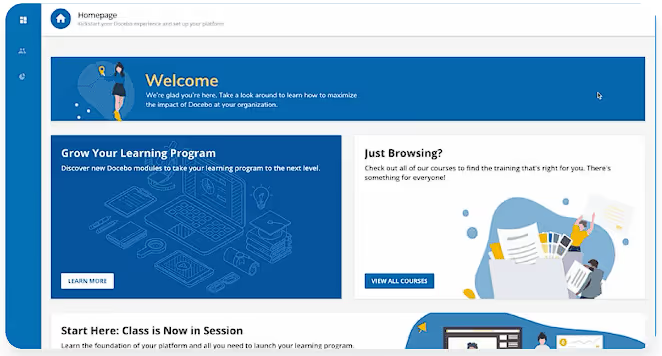
Key Features
- Built-in reporting dashboards for visualizing performance
- Free eCommerce, gamification, and custom domain extensions
- Centralized SaaS business integrations
- Sell online courses to external learners
- Native LMS integration with Salesforce
6. LearnUpon LMS

LearnUpon is a purpose-built LMS that allows businesses to build automated learning programs for different audiences on a single platform. Its training portal tool enables users to configure learning experiences for various target audiences based on learner roles or groups. LearnUpon integrates with Zendesk, Zoom, and Intercom.

Key Features
- Generate AI-powered scenario-based assessments
- Enterprise-grade security and reliability
- Automated summaries of learner feedback
- URL white labeling for setting custom URLs
- Multiple learner enrollment
7. Tovuti LMS

Tovuti LMS is designed for sales, partner, customer, employee, and customer training. It enables users to create, monetize, and sell courses online. It has an open API that integrates with pre-existing websites so that users can sell courses from their personal websites. Tovuti also has an event manager platform for hosting and streaming live events.
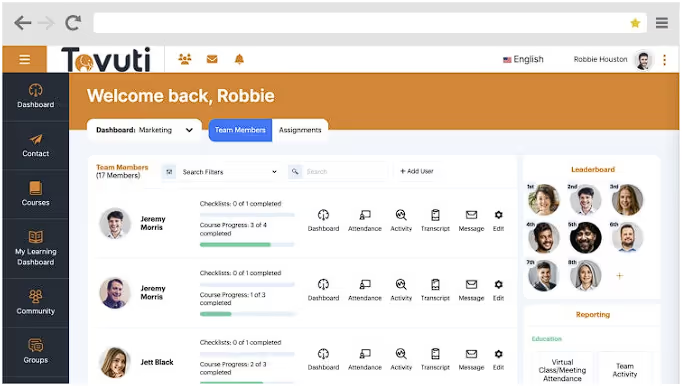
Key Features
- Plug-and-play gamification and interactive tools
- Monetize, sell, and manage subscriptions
- Payment gateway that supports transactions in multiple currencies
- Learner support ticketing portal
- Multiple language support for content
8. Moodle

Moodle is an open-source LMS software built for K-12 classrooms, higher education, vocational training, and enterprises. It supports cloud hosting and enables users with a custom-built Moodle website.
Moodle integrates with plagiarism detection software and student information systems for educational institutions to help users manage student learning. For workplaces, it enables organizations to facilitate eLearning and compliance training.
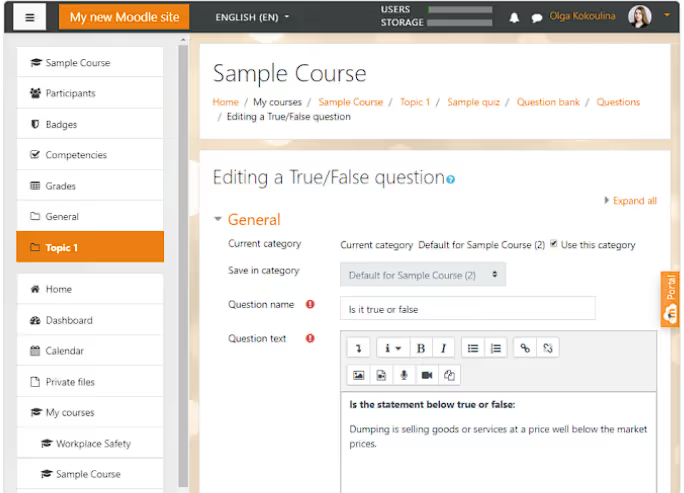
9. 360Learning

360Learning is a collaborative learning platform with AI-driver training content creation, co-authoring, and workflow integration tools. It is SCORM compatible and allows users to bulk import their existing catalog of SCORM courses. 360Learning enables organizations to automate and manage compulsory training and retraining programs like compliance training or recertification. It also lets users sync HRIS or HCM platforms to import learner information and create automated workflows.
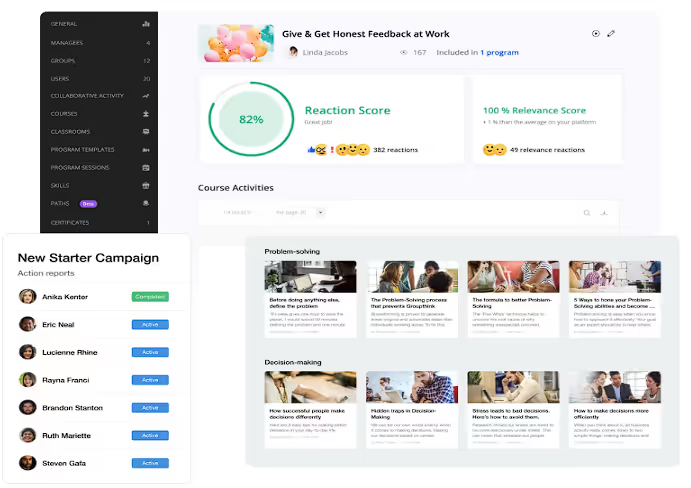
Key Features
- Ecommerce integration to monetize courses
- Automatic skill gap identification
- Skill-based course recommendations for learners
- Automated user provisioning for importing users and self-registrations
- Audit proof reporting
10. Canvas LMS
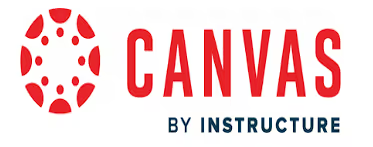
Canvas LMS is a platform for student and corporate education. Its API integrates with Adobe, G Suite, and Microsoft Teams, enabling users to build a centralized learning hub. Users can organize internal professional training or create and sell public course offerings via a branded storefront. Canvas LMS also has a video platform for learning.
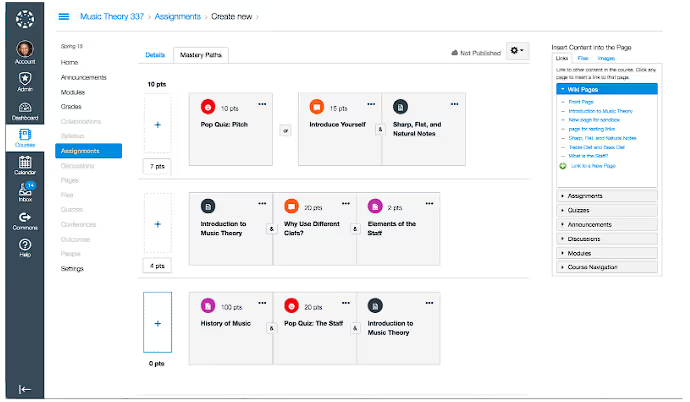
Key Features
- Mobile app accessibility
- Third-party applications integrations
- Integrated data visualization for tracking student progress
- Shareable digital credentials
- Centralized Edtech library
11. D2L Brightspace

D2L Brightspace is built for businesses, higher education, K-12, and government organizations. It enables enterprises to design corporate-led learning programs and measure workforce readiness. It offers an AI-powered skill mapping platform to help organizations determine the required skills for career pathways and develop action plans to upskill employees.
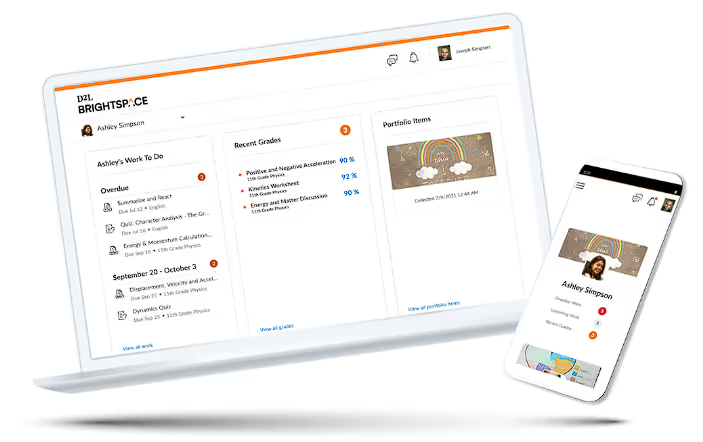
Key Features
- AI-driven skill mapping and pathways
- Access to various internal and external learning programs
- Customized learning
- Online teaching and learning studios
- Asynchronous online learning tool
Main Types of LMS
There are many different types of LMSs, but some are better suited to certain tasks than others. Here’s a quick breakdown of some of the main types of LMS platforms.
LMS Deployment Models
LMS platforms vary by deployment model or how they’re built and delivered. The following are some of the most common types of LMS platforms by deployment model.
Cloud-Based LMS
A cloud-based LMS is hosted on the cloud. These are often made available through third-party applications and include scalable options, meaning that users can pay for what they need—they don’t have to overspend on features and storage that they don’t use.
For the most part, cloud-based LMS can be accessed by anyone with an internet connection, whether they’re working from the office or anywhere else. As such, they’re a great option for remote or hybrid teams or anyone that requires easy, yet secure access to training materials.
SaaS LMS
Most cloud-based LMS platforms operate under a SaaS model, where businesses pay to use the software hosted by other companies. LMS SaaS providers usually offer different tiers and packages, depending on how much or how little you need to use.
You can purchase whatever tools and features your organization requires, which is why the SaaS model is generally considered to be among the most flexible in terms of price.
Self-Hosted LMS
The primary difference between a self-hosted LMS and a cloud-based or SaaS LMS is that businesses install and manage self-hosted platforms on their own servers. While this added layer of responsibility can prove challenging, it can also provide greater flexibility. You can customize and modify different elements of the platform to fit your business needs.
Self-hosted options are great for those with the time and expertise to maintain them and can be modified to your preferences to an extent that other LMS options can’t.
Private Cloud LMS
With a private cloud LMS you get access to a private LMS. Like self-hosted LMSs, you are responsible for managing the system, but they aren’t as open as typical cloud-based platforms. Private cloud options are usually highly customizable and can integrate with your existing infrastructure.
LMS Industry Use Cases
In addition to the deployment model, LMSs vary by industry. These are the main learning management system types by industry and use case.
Corporate LMS
A corporate LMS describes any LMS platform that is used in the business world to train employees. These LMSs often include information on compliance, remote training, onboarding, and sales enablement.
Education LMS
Education LMSs are used in schools to promote student learning. Students can view and attend courses through an LMS platform, as well as gain access to instructional materials and grades. In essence, they’re similar to corporate LMSs, except their emphasis is on academic learning, not training and onboarding.
LMS Licensing & Pricing Models
LMSs also vary by licensing and pricing models:
Open-source LMS
An open-source LMS has an open-source code system that allows users with technical knowledge to build LMS features from scratch, customize existing functionality, or even modify the entire platform to fit your organization’s learning-specific needs.
It’s freely available to the public and does not require you to pay for usage. However, an open-source model requires significant technical effort to customize and set up.
Pay-per-user learning management systems
Pay per user is a pricing model that allows organizations to pay a monthly or yearly cost depending on the number of learners using the LMS platform. This model is suitable for businesses with a set budget and a relatively known number of learners. It is cost-effective and great for budgeting.
Pay per course learning management systems
Here, you’re charged based on the number of courses you use or create on the LMS platform. This model is suitable for organizations that run training once or a few times a year. Rather than pay a fee per active user, the LMS cost is based on only courses utilized.
LMS with a One-time licensing fee
If you want a pricing model that lets you pay a fixed price regardless of the number of users or courses, go for a one-time licensing fee. You’ll typically pay a yearly fixed price with no limit on the number of users or courses you can add. The payment also covers setting up, and technical support services.
Key Features to Look For in the Best Learning Management Systems
LMSs vary in terms of features and capabilities. While you should aim to find an LMS that’s most compatible with your business objectives, there are a few key features to look for, regardless of your industry or specific company goals.
Intuitive Interface
A platform that’s difficult to use defeats the purpose of having an LMS in the first place. When searching for an LMS for your business, you should prioritize an intuitive user interface above just about anything else. If your employees can’t make sense of the LMS or can’t easily access their training materials, they won’t be too thrilled about having to go through the process, and this can hinder their learning and suppress motivation.
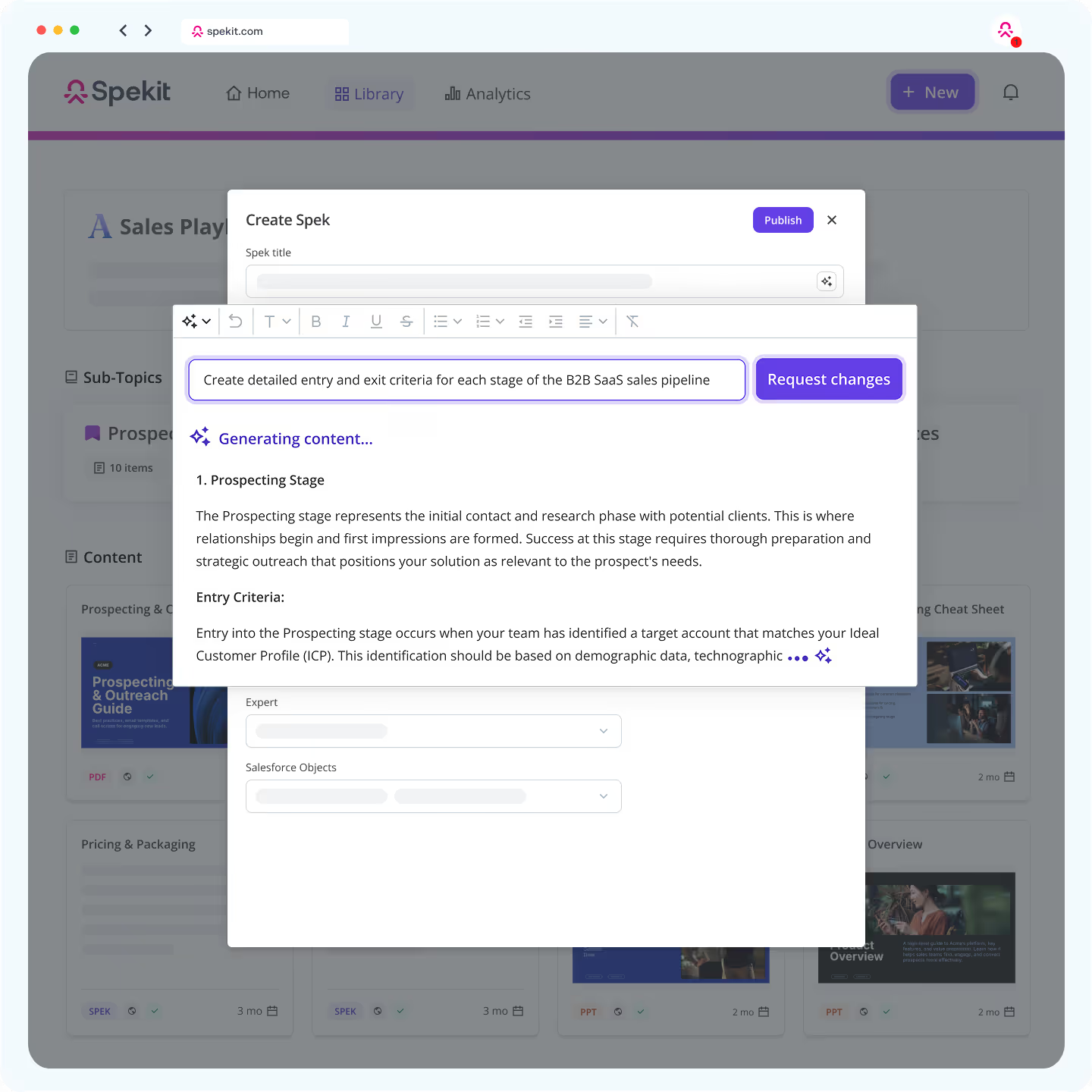
Automation
It can be helpful to have an LMS that automates certain tasks and procedures, especially those that are repetitive and time-consuming. Your LMS can automate these tasks so that you have more time to spend on other things.
Gamification
Gamified LMS features are a great way to increase employee engagement and get workers excited about the training process. It can also help foster some healthy competition and help employees get to know each other. Popular gamification elements include leaderboards and badges.
Accessibility
The importance of being able to easily access materials should not be overlooked. While it can be easy to get caught up in all the bells and whistles of an LMS, you shouldn’t lose sight of the basics, and that includes—perhaps first and foremost—the ability for employees to navigate the platform.
Peer Collaboration
Ideally, your chosen LMS system will allow for collaboration. It’s important to keep employees engaged with the training, and one of the best ways to do so is by providing collaborative opportunities. This can also tie into gamification.
Personalized Learning Experiences
Perhaps most notably, an LMS can help standardize the training process. That said, it is also important to offer personal touches here and there. You can personalize the experience for employees by leveraging AI and uncovering the best ways to meet their individual needs.
Built-In Authoring
Built-in authoring tools allow you to create content directly within the LMS. This is often easier than having to build elsewhere and transport your materials into the system.
Microlearning Capabilities
Microlearning may be thought of as “bite-sized” learning, and it can be a great way for employees to learn and absorb information in an easily digestible way. A good LMS should allow for the deployment of small bits of information.
Support For Multiple Content Types
You should look for a learning management system that’s compatible with many different types of content. You want to be able to scale and diversify your content as you grow, so it’s important to ensure that your system can handle various content types.
Course Management
It should go without saying that a learning management system should allow for course management. You should be able to easily make changes to your courses within the platform.
.avif)
Assessment Tools
Being able to assess employee learning is one of the most important features of an LMS. Your LMS of choice should enable you to track their progress and perform assessments to gain deeper insights.
Analytics and Reporting
Along with assessment tools, a good LMS will provide regular reports and analytics letting you know how well employees are performing on their training. These reports can show you where they’re struggling and may need some extra assistance.

Data Security
Security has become top of mind for many businesses, and you don’t want your LMS to compromise the security of your data. It’s a good idea to look for a system that emphasizes user privacy.
Third-Party Integrations
It’s important to find an LMS that offers third-party integration capabilities. For instance, Spekit integrates with Slack and allows users to create knowledge bases. In this way, Spekit can complement your LMS by enabling you to integrate with another platform to provide maximum value to your employees.
The Problem With Traditional Learning Management Systems
Learning management systems have undoubtedly transformed the corporate training process for the better, but they still have their downsides. One of the significant drawbacks of traditional LMSs is that they often fail to provide contextual learning experiences. As a result, LMSs are still “destinations” where people need to seek information.
In other words, LMSs cause friction because employees need to leave their workflows to log into a separate system. As a result, this slows them down, cuts into valuable selling time, and distracts them from finding the knowledge they need in the now.
Just-in-time learning delivers contextual content to employees whenever, wherever they need it. Employees do not have to remember passwords, open separate tabs, or exit the tools they’re in to get answers.
Another benefit of just-in-time learning is smaller, more digestible bits of information. LMSs serve large chunks of information that aren’t helpful for immediate, real-life scenarios or situational learning. Having to trawl through dense company wikis can frustrate employees with the training process. And, when they can’t find what they’re looking for quickly, they’ll seek alternative solutions to their questions, which can involve distracting others. That’s why you see what would have been a self-service question repeated time after time on Slack and in emails.
Future LMS training programs will need to show employees how to apply information rather than dump it on them and expect them to memorize it. Spekit helps users with contextual, in-app tools that promote more effective short-term applications and long-term learning.
More About Learning Management Systems
Here’s more information on learning management systems:
What is LMS implementation?
LMS implementation is the process of deploying learning management software in an organization. It involves evaluating different platforms and choosing the one that most aligns with your employee training needs, authoring learning content, enriching the LMS with educational materials, and setting up users.
The implementation process can take anywhere from a day to months and generally involves six major steps (which vary depending on organizational size):
- Planning
- Configuring the LMS
- Integrating systems
- Course and data migration
- User acceptance testing
- Going live
A successful implementation starts with having a structured team. You should work with a project manager, Subject Matter Experts, IT specialists, partnership managers, and other key stakeholders.
How to select the best LMS for your business
When choosing an LMS, you first need to determine your organization’s learning needs. Let’s say your employees are currently taking call center training, and you want to guide them down a specific learning path, you’ll need an LMS with a guided learning feature. Once you’ve clearly understood your needs, you’ll know what features and functionality to look out for.
Next, create a budget. Some LMS platforms are more suited for large enterprises, while others have solutions that are affordable for small and medium businesses. Having a budget helps you streamline your options.
Other factors to consider are:
- Usability: An LMS must be easy to use with a low learning curve to keep employees engaged in training programs.
- Scalability: As your organization grows and you bring new hires on board, your LMS should be able to scale to cover new training needs.
- Reporting analytics: You’ll need to track learner progress, report on performance, and assess areas where training isn’t as effective as it should be.
- Support: In the initial stages of using an LMS, especially using an LMS platform that offers optimal customer support is crucial to streamline the implementation process.
After considering these factors, you may realize the best fit is Spekit. Spekit’s just-in-time enablement platform can accommodate any number of users and is easy to use; your employees won’t have to spend hours trying to navigate the interface.
With the analytics tool, you can measure training engagement and impact, and determine what areas what’s working or where teams need additional training.
What is the reason you need an LMS?
With traditional training methods, one had to manually set up, facilitate sessions, and monitor learner engagement and progress. Organizing employee training programs was time-consuming and costly whether you’re a small or large business.
The right LMS can significantly reduce the cost and business hours spent implementing training programs. It removes the need for in-person training, allowing you to automate course authoring, delivery, and assessments and monitor learning progress from wherever you are. It also gives you a clearer view of the ROI and effectiveness of your training plans and what areas you’ll need to make changes to.
Again, if you’re looking for a learning platform that helps you quickly create course materials, design learning paths for your teams, monitor their progress to know how they’re engaging with training content, and even assess retention levels, try Spekit.
Choose the Best LMS to Give Your Employees a Contextual Learning Experience
There are many benefits to using an LMS, but accessibility and ease of use are at the top. Employees prefer online training systems because they provide greater flexibility and allow them to keep track of their progress. However, having your learning materials online isn’t enough. Businesses need flexibility and the ability to react to fast-evolving situations. Contextual, just-in-time learning and delivery allows them to do that.
The Spekit LMS integration can elevate the corporate LMS experience through just-in-time and contextual, embedded learning. Spekit offers solutions for multiple use cases, including sales enablement, employee onboarding, and training. Most importantly, it extends the capabilities and value of the LMS you’re using or plan to use.







